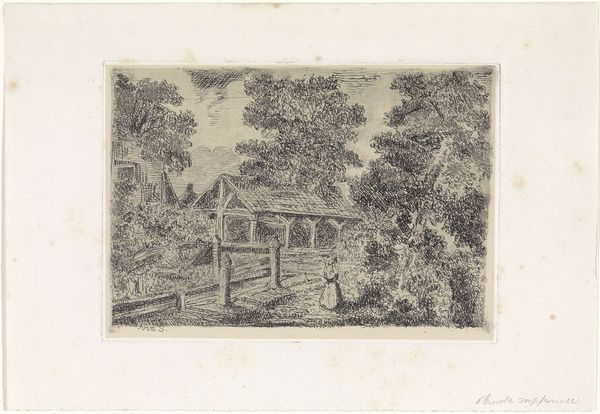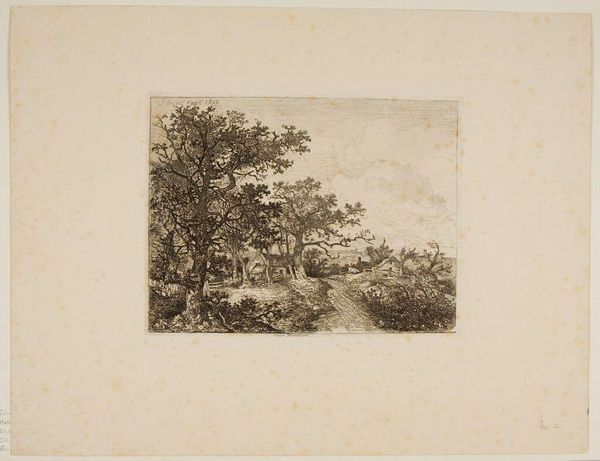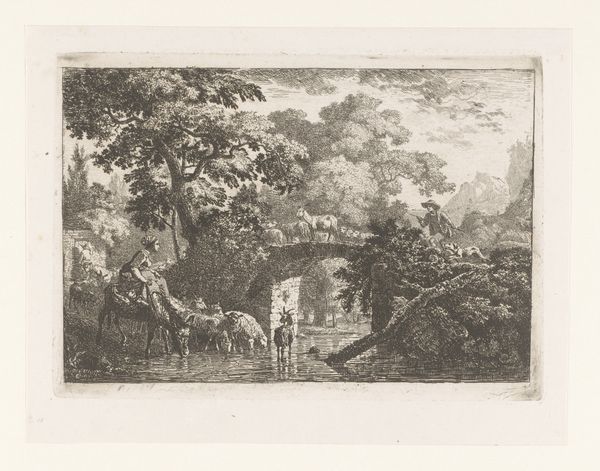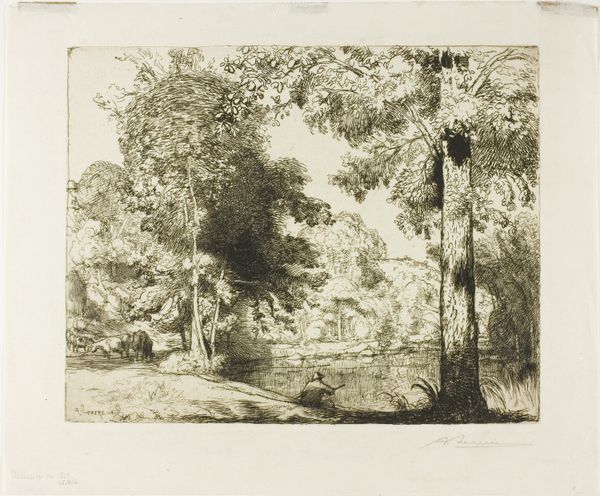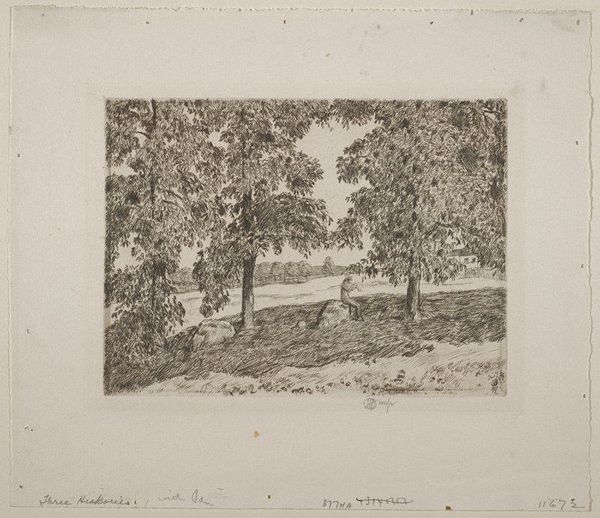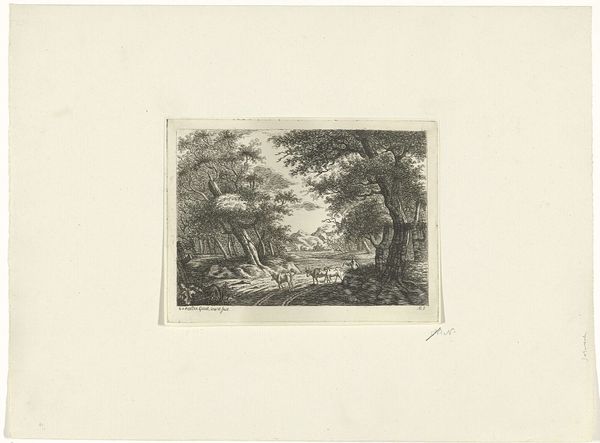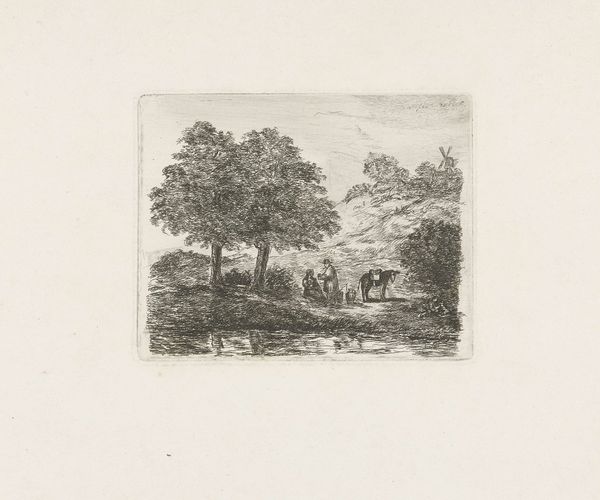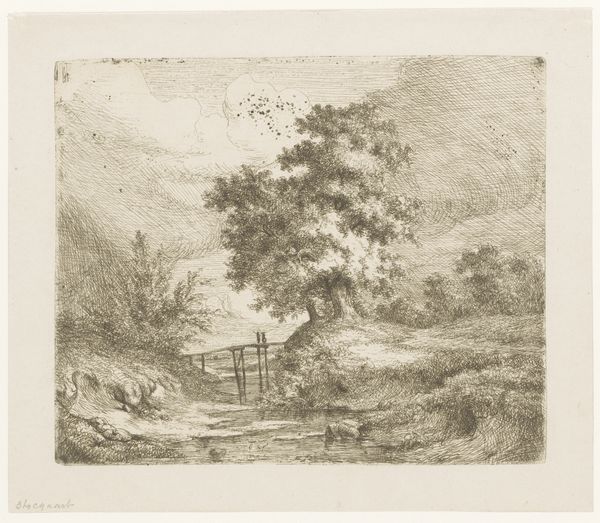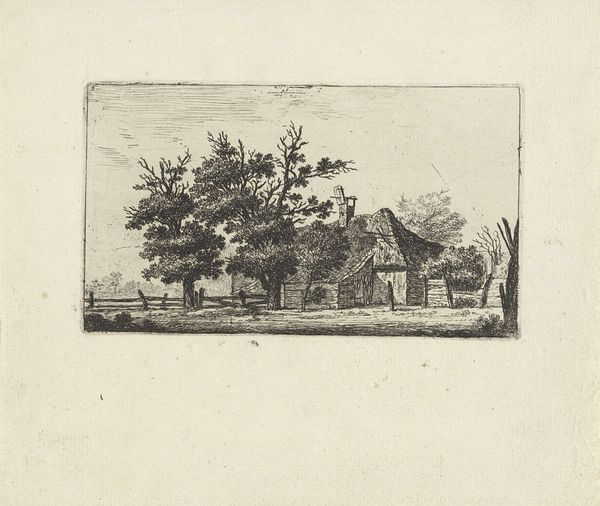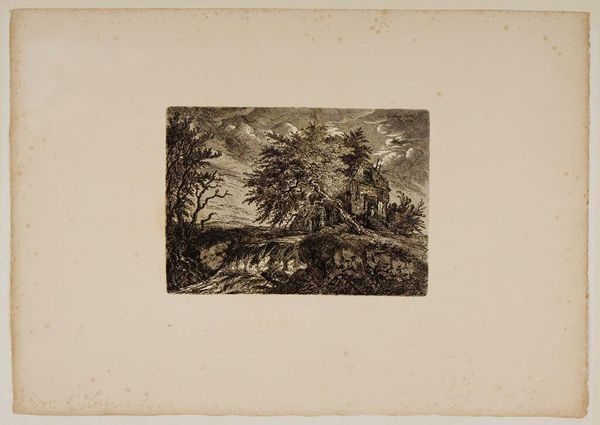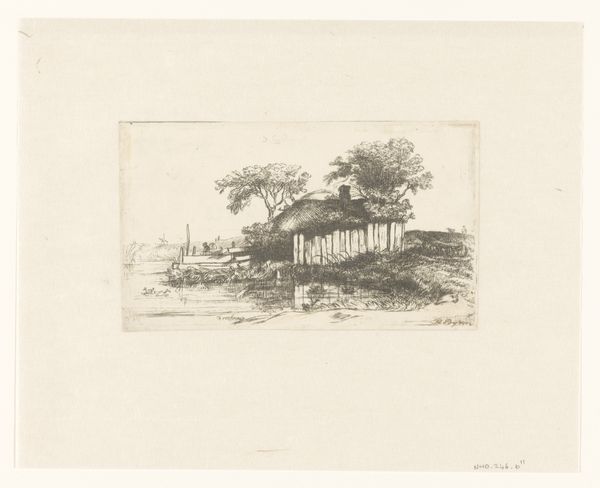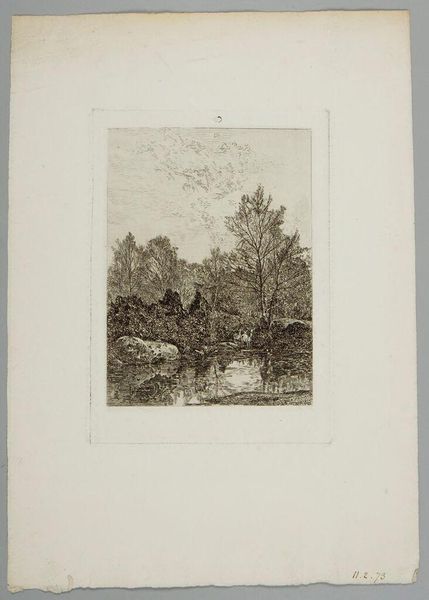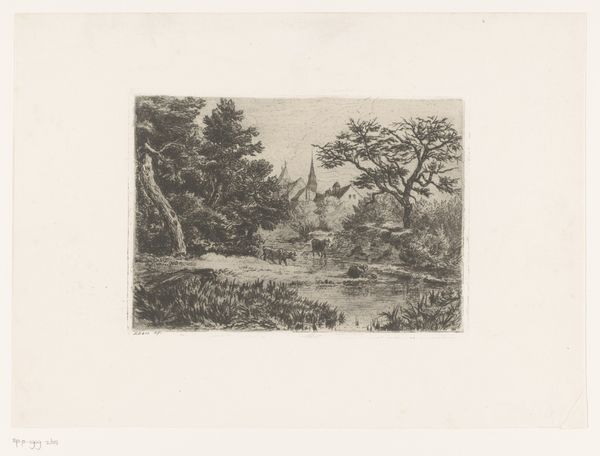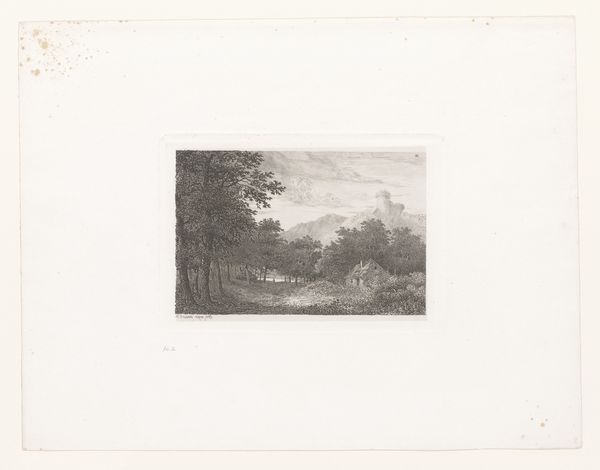
Dimensions: height 109 mm, width 153 mm
Copyright: Rijks Museum: Open Domain
Editor: We're looking at "Boothuis op de oever" (Boathouse on the Shore), an etching by Arnoud Schaepkens, created sometime between 1855 and 1904. It's a small, intimate scene rendered in incredible detail. What really strikes me is the quiet stillness of the whole image. What do you see in this piece? Curator: This piece vibrates with symbolic weight, doesn't it? The boathouse itself can be viewed as a threshold. Do you notice how it straddles the line between land and water, nature and structure? Editor: Yes, it's like a transition point. Curator: Exactly! In the Romantic era, which heavily influences the style here, nature was often seen as a place of solace, of escape from the burgeoning industrial world. The boathouse, situated between worlds, holds the promise of both the familiar and the unknown. Also, the lone figure near the boathouse appears contemplative, don't you think? Perhaps symbolizing a human connection to the natural landscape. Does the texture from the etching technique add to this narrative? Editor: It definitely adds to the overall mood. The cross-hatching creates a soft, almost dreamlike quality, contrasting nature and domesticity. Almost nostalgic? Curator: Nostalgia for an ideal world? This imagery of the threshold, the lone figure, they echo timeless themes of human existence and cultural continuity, of finding our place within the world. The symbols have morphed but the essence resonates across time. Editor: I hadn't considered the boathouse as a threshold before. Curator: Consider the continuity, the underlying structure, always adapting to the changes in surface and time. Editor: Looking at it now, it is pretty amazing how many layers of meaning an artist can pack into such a simple scene. Thank you for your insights.
Comments
No comments
Be the first to comment and join the conversation on the ultimate creative platform.
